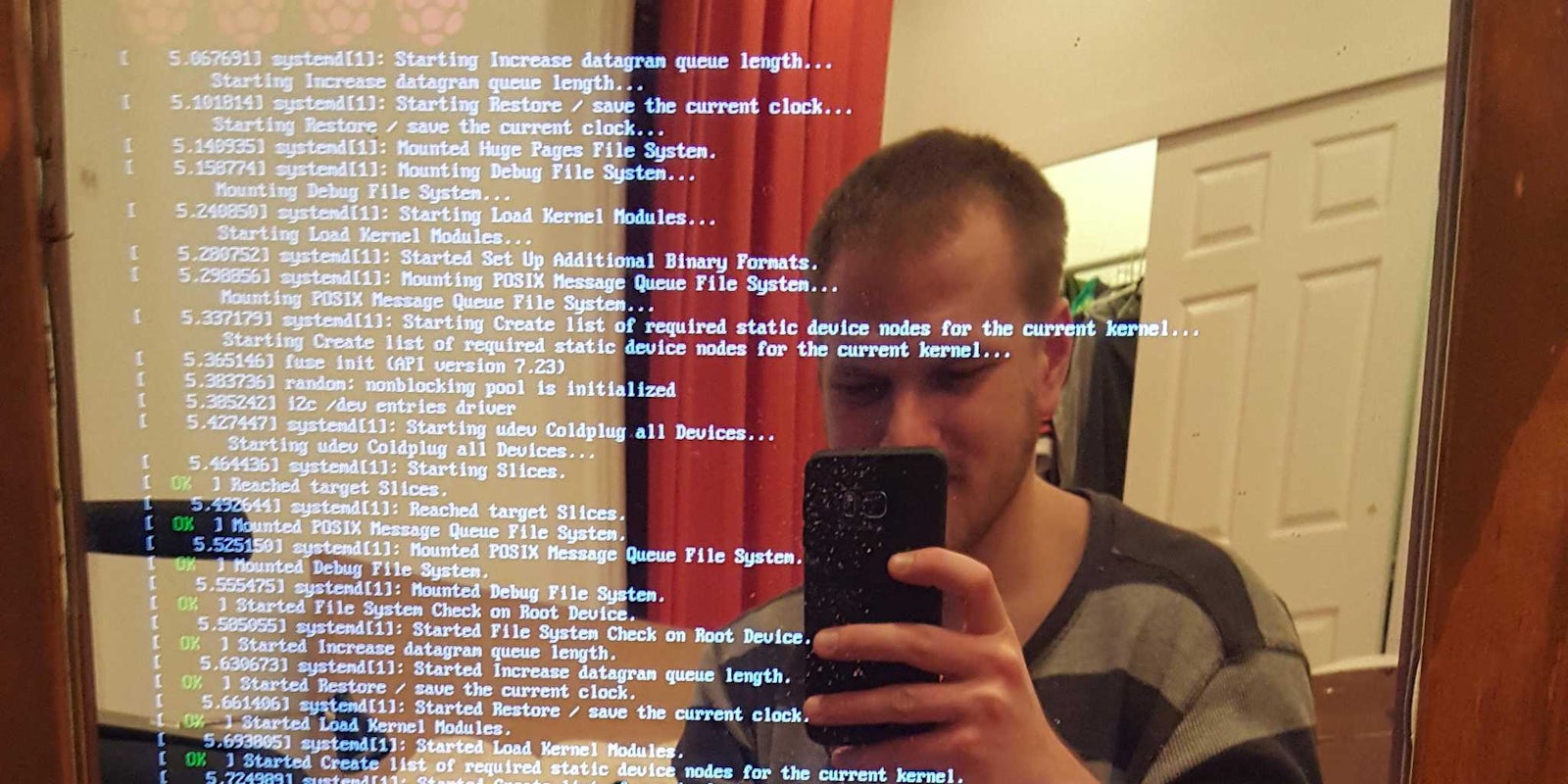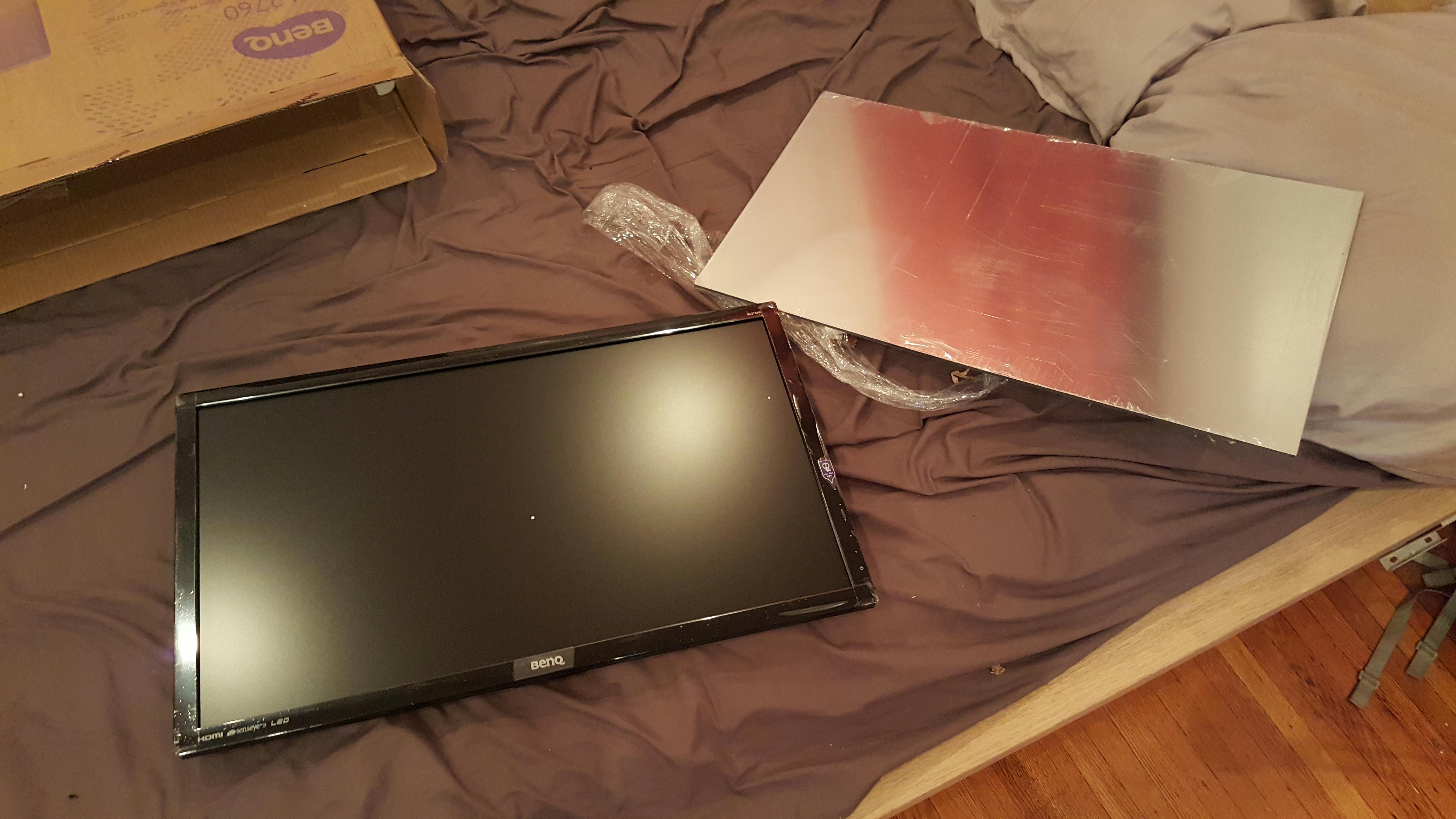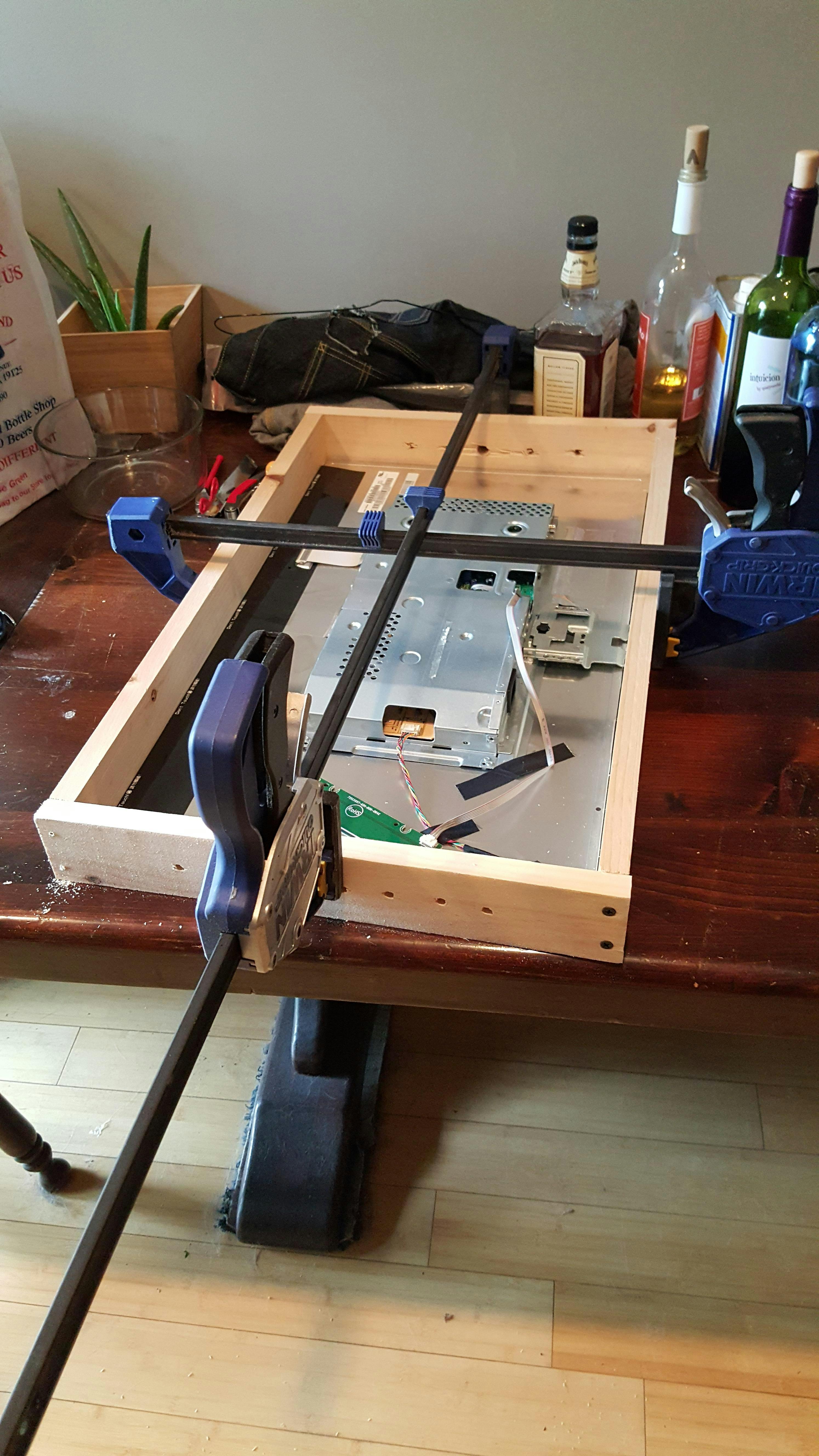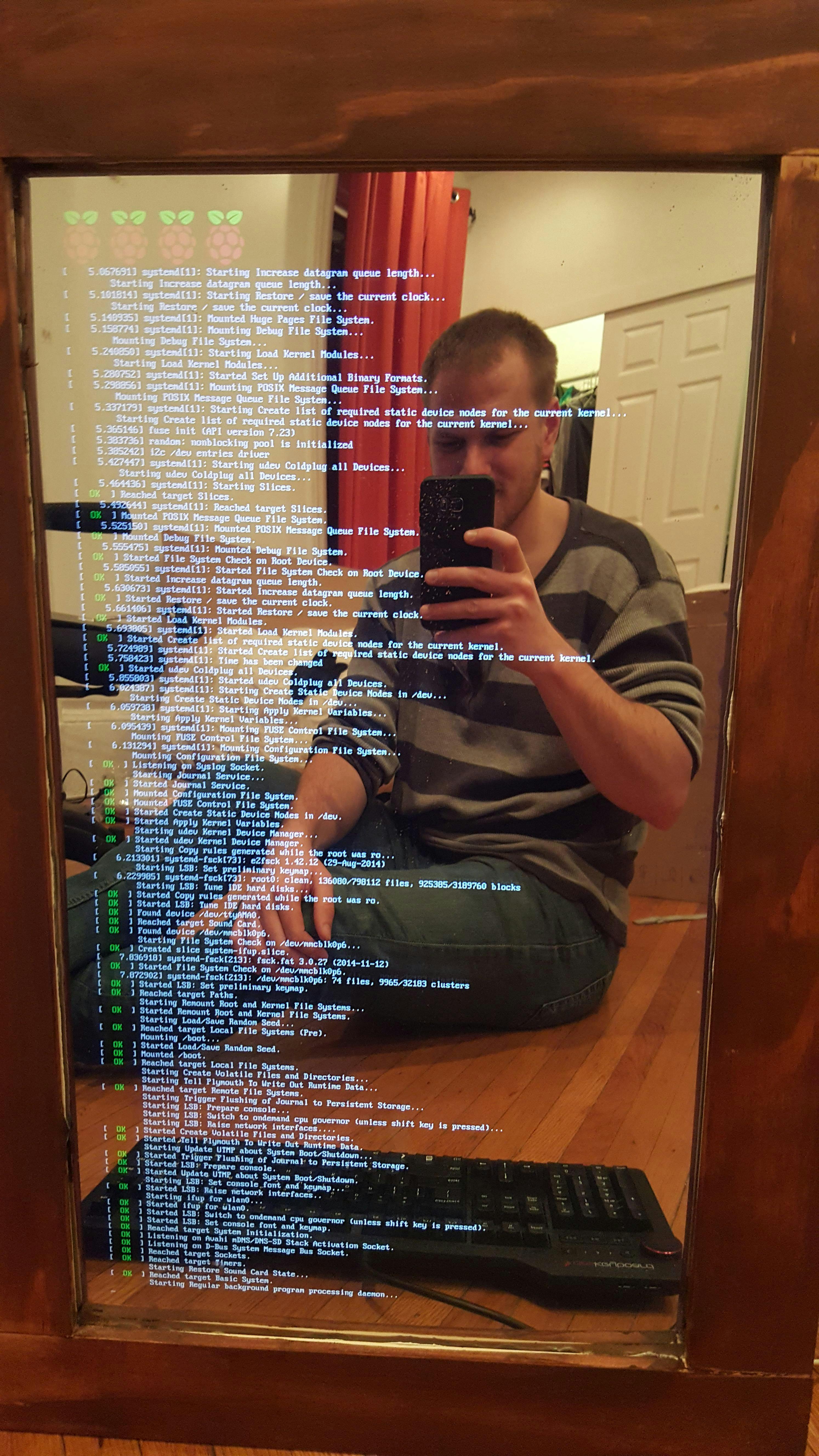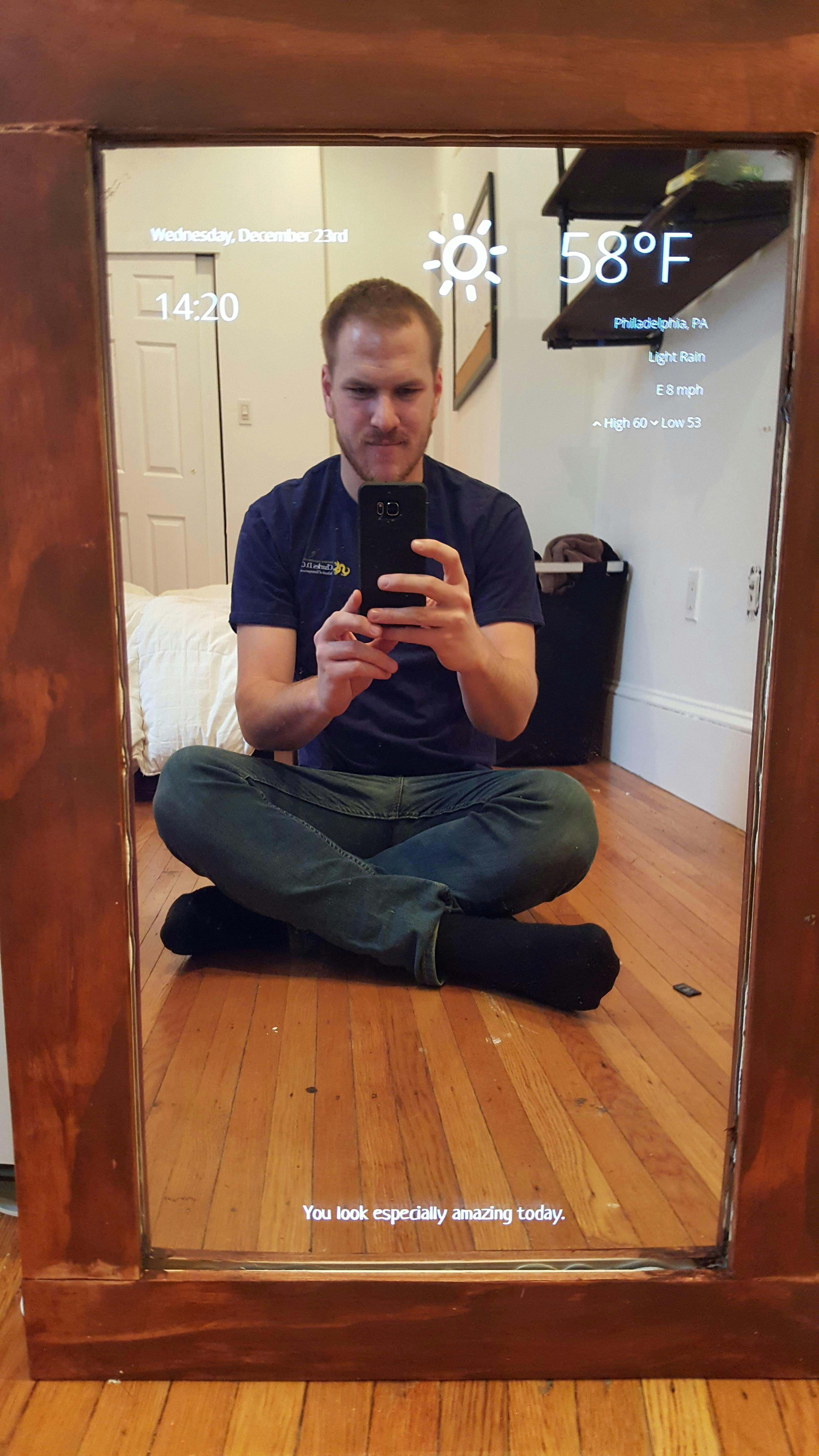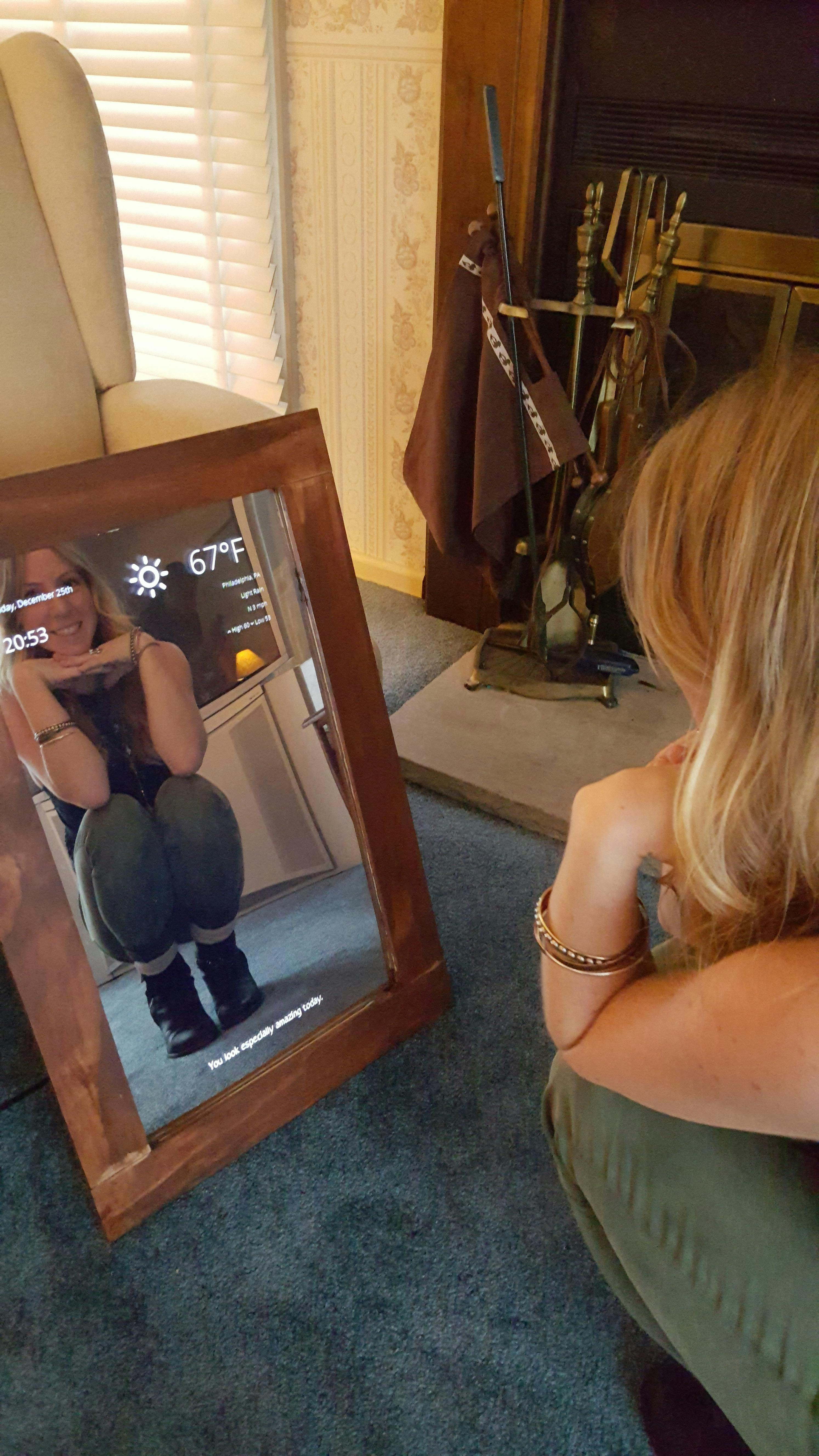When you looked at yourself in the mirror on Christmas morning, did you see the face of a person confident in their gift-giving ability? It’s a good thing you didn’t see the magic mirror that one web designer built, because if you had, you’d only see your own disappointment at not being as cool as him.
Using a monitor, a double sided acrylic mirror, and the Raspberry Pi programming kit, Dylan Pierce built a present that is sure to put whatever you wrapped this year to shame. But the enterprising do-it-yourselfer didn’t just show off his creation online to make everyone else feel inadequate; he also posted instructions for making a magic mirror yourself, so you can surprise your loved one with the best homemade gift ever next year.
Pierce explained on his blog that choosing the monitor was the first step, one that dictated the size of the mirror. “I wanted to get something large as possible but also with a removeable [sic] arm so it could fit inside of a case,” he wrote. “Another important aspect is making sure you get a monitor with the inputs towards the center of the monitor rather than the sides.”
Pierce picked a 27-inch LED monitor from BenQ. He then picked up a double-sided acrylic mirror, because “they’re much more forgiving than actual mirrors and you can cut them in several different ways to fit what you need.”
Pierce did away with the monitor’s plastic bezel using a paint scraper, then built a simple casing for the monitor with a couple of wooden two-by-fours, cutting holes in the case to ensure air flow for the computer that would be housed inside.
Once the external part of the project was in good shape, Pierce started the part that would make it all work: Raspberry Pi. The device, a single-board computer of choice for tech-savvy creative types, served as a kiosk to relay information through the magic mirror.
After booting up the mini computer, Pierce installed Chromium, an open-source web browser project best known as the basis for Google Chrome. He configured the program to open in full-screen mode on startup, then built a simple webpage that would generate the information to be displayed through the mirror.
The finished project shows the day’s forecast and an animated weather icon, the date and time, and a random compliment—and, of course, your reflection.
As cool as the magic mirror is—and it’s very cool—it’s not a very cheap endeavor. Based on the prices of the components, it will set you back between $250 and $300.
Regardless of its price, the magic mirror is definitely a one-of-a-kind gift (or at least it was, before Pierce shared an easy-to-replicate construction guide).
You have nearly an entire year to figure out how to make this one present. Santa Claus delivers gifts to every child in the world in just one night. Get to work.
H/T Imgur | Photo via Dylan Pierce
